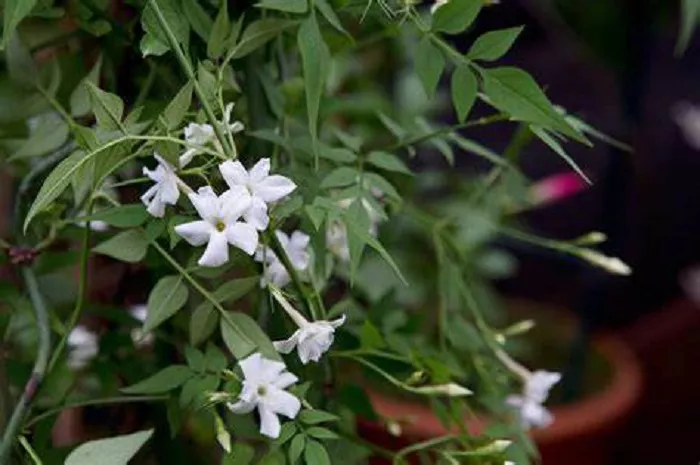In the tranquil world of gardening, jasmine plants stand out for their enchanting fragrance and delicate beauty. These flowering wonders are beloved by gardeners and nature enthusiasts alike. Understanding the lifespan of jasmine plants can help you better nurture and appreciate these charming additions to your garden. From their growth habits to the factors influencing their longevity, this article delves into the captivating world of jasmine plants.
The Lifespan of Jasmine Plants: A Brief Overview
Jasmine plants, with their graceful vines and intoxicating blooms, typically live for several years. Under optimal conditions, they can thrive for a decade or more. However, their longevity depends on various factors, including species, care, and environmental conditions. Let’s explore the intricacies that shape the lifespan of these delightful plants.
Species Variations
Different jasmine species exhibit varying lifespans. The common jasmine (Jasminum officinale) is known for its hardiness and can live up to 15 years with proper care. This species is often found in temperate climates and is celebrated for its strong, sweet fragrance. On the other hand, the star jasmine (Trachelospermum jasminoides) is more suited to warmer climates and can last around 10 years. Its evergreen foliage and star-shaped flowers make it a popular choice for landscaping.
Environmental Factors
The environment plays a crucial role in determining the lifespan of jasmine plants. Soil quality is a key factor. Jasmine thrives in well-drained, slightly acidic soil. Rich, loamy soil provides the necessary nutrients for healthy growth and longevity. Additionally, the climate significantly impacts jasmine plants. Those in regions with mild winters and warm summers tend to live longer than those exposed to extreme temperatures. For instance, jasmine plants in subtropical climates often enjoy extended lifespans due to the favorable growing conditions.
Care and Maintenance
Proper care is essential for extending the lifespan of jasmine plants. Regular watering is vital, especially during the growing season. Jasmine plants require consistent moisture but should not be overwatered, as this can lead to root rot. Pruning is another important aspect of jasmine care. Regular pruning helps maintain the plant’s shape, promotes healthy growth, and prevents diseases. It is best to prune jasmine plants in late winter or early spring before new growth begins. This allows the plant to recover quickly and encourages robust flowering.
Common Challenges and Solutions
Jasmine plants may face several challenges that can affect their lifespan. Pests such as aphids and spider mites can weaken the plants and reduce their longevity. Regular inspection and prompt treatment with insecticidal soap or neem oil can help control these pests. Diseases like powdery mildew and leaf spot can also impact jasmine plants. Ensuring good air circulation and avoiding overhead watering can help prevent these diseases. If disease does occur, removing affected leaves and treating the plant with a fungicide can mitigate the damage.
Propagation and Renewal
Propagation is an excellent way to extend the presence of jasmine plants in your garden. Jasmine can be propagated through cuttings, layering, or seeds. Cuttings taken from healthy, mature plants can root easily and develop into new plants. Layering involves bending a stem to the ground and covering it with soil, allowing it to root and form a new plant. These methods not only help you grow more jasmine plants but also ensure that you have a continuous supply of these fragrant beauties.
Enhancing Lifespan Through Companionship
Planting jasmine with complementary plants can enhance its longevity. Companion plants can provide shade, improve soil health, and deter pests. For example, planting marigolds near jasmine can help repel harmful insects. Additionally, incorporating organic mulch around the base of jasmine plants can help retain moisture, regulate soil temperature, and enrich the soil with nutrients. This holistic approach to gardening can significantly contribute to the health and longevity of your jasmine plants.
Seasonal Care Tips
Seasonal care is essential for maintaining the health and longevity of jasmine plants. In spring, it’s time to fertilize the plants to support new growth. A balanced, slow-release fertilizer is ideal. During summer, ensure that the plants receive adequate water, especially in hot, dry weather. Fall is a good time to prune any dead or overgrown branches. In winter, protect the plants from frost by covering them with a frost blanket or moving potted jasmine indoors.
The Role of Genetics
The genetic makeup of jasmine plants also influences their lifespan. Some cultivars are bred for specific traits, such as disease resistance or extended blooming periods. These genetic enhancements can contribute to the overall longevity of the plants. When selecting jasmine plants, consider choosing varieties that are well-suited to your climate and have a reputation for long-term health and beauty.
Cultural Significance and Aesthetic Appeal
Beyond their practical aspects, jasmine plants hold cultural and aesthetic significance. In many cultures, jasmine symbolizes love, grace, and purity. Its fragrant blooms are often used in weddings and ceremonies. In the garden, jasmine adds a touch of elegance and tranquility. The sight and scent of jasmine flowers can uplift the spirit and create a serene atmosphere. By understanding and nurturing the lifespan of jasmine plants, you can enjoy their beauty and fragrance for years to come.
Conclusion
Jasmine plants are a delightful addition to any garden, with their captivating fragrance and delicate blooms. Their lifespan can vary based on species, care, and environmental factors. By providing the right conditions and attentive care, you can ensure that your jasmine plants thrive for many years. Whether you are a seasoned gardener or a novice, the joy of nurturing jasmine plants is a rewarding experience that brings beauty and fragrance to your life.


